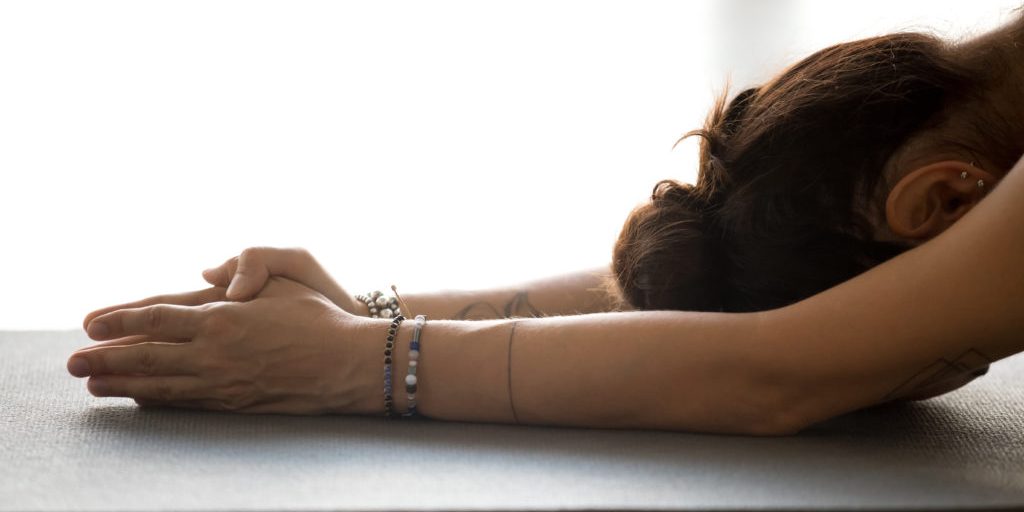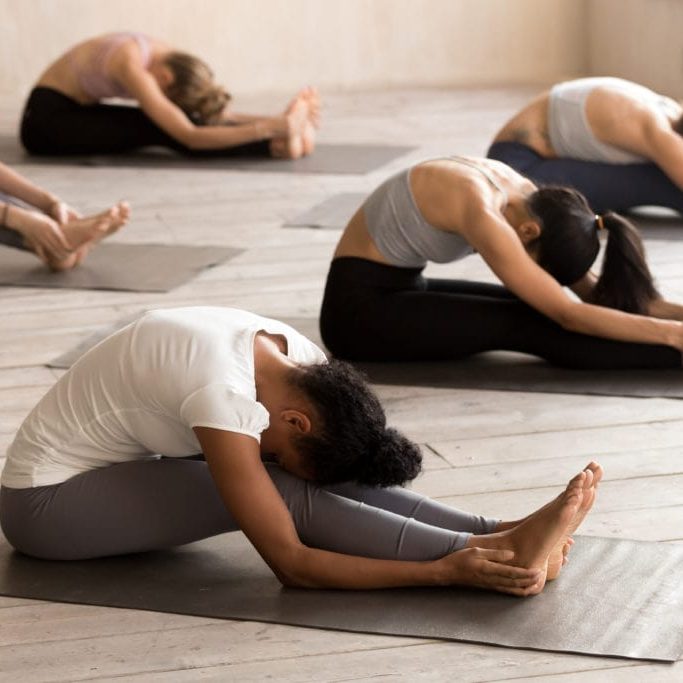Yin Yoga
Yin yoga started in the 1970s making it a fairly new form of yoga. It is heavily rooted by traditional Chinese medicine.
It is practised at a much slower pace and the poses are based on the characteristics of animals as well as the five alchemical elements of Earth, Metal, Water, Wood, and Fire. It can be beneficial for people who are new to yoga because of its slower pace.
Poses are held for a long period of time - anything between two and five minutes with the idea being that the connective tissue (fascia) is stretched properly.
Doing this will increase flexibility and balance - as well as releasing stored tension from the body.
Devotees say that the effects are similar to a deep tissue massage and claim they feel incredibly relaxed and calm afterwards.

What is Yin Yoga?
It was founded in the late 1970s by martial arts expert and yoga teacher Paulie Zink, who has been quoted as saying: “The practice of Yin yoga poses does not require scientific approval or validation.
He continued: “Intellectualising the practice of Yin yoga serves to obstruct a deeper understanding of its essence. The real power to authorise truth is contained within each and every one of us.”
He developed his style of yoga from the ancient tradition of Taoist yoga that is originally from China. Yin as it is today is influenced by Paul Grilley.
Zink studied Hatha yoga and incorporated some of the Hatha traditions into the form meaning Yin yoga combines many of the philosophies from ancient China and India.
The sequences of postures are meant to stimulate the channels of the subtle body known as meridians in Chinese medicine and as nadis in Hatha yoga.
Whereas in a typical Hatha yoga class, the muscles might be the focus, in Yin yoga the joints and fascia will be the primary target.
It can be a wonderful compliment to other more dynamic forms of exercise.
Three Central Components For The Basis For Yin Yoga
- Timing
You will spend at least two minutes in a pose - and as you become more advanced this will increase to a maximum of six minutes. Practitioners are encouraged to come out of the pose slowly and with awareness so they don’t shock the body and cause injury.
- Stillness
Once you’re in the pose, you’re encouraged to be still and to move deeper into the stretch with every breath. Practitioners are encouraged to close their eyes so that they can focus fully on the stretch only and reap all the benefits that it brings.
- Intensity
The idea is that within the poses you will experience a wonderful release - a feeling of letting go. Students are encouraged to observe their body very carefully and to ensure that the intensity is enough for them - although you want to feel the stretch, agony is not the end goal! Sharp or a shooting pain shouldn’t be ignored and is a sign that the student has gone too far.
What to Expect from a Yin Yoga Session
Yin yoga is an amalgamation of Yoga and Chinese philosophy, meaning there are some differences to a traditional yoga class. Rather than using Sanskrit, poses are given names including; butterfly, dragon fly, square, seal and snail.
Yin yoga is a very different experience for yogis - mainly because of its much slower pace. Because the poses are held for such a long time, it might be that you only do eight or ten poses in a class.
Although some teachers might include the occasional standing pose within a session, the majority of the poses are seated or supine.
The use of props, particularly blocks, is encouraged. Props are used slightly differently in a Yin yoga class. Yes it might be to offer support, but it can also be to increase the sensation of the stretch.

Although it is a slower pace of yoga it can be incredibly intense because the poses are held for such a long time.
Although yoga is an all-body form of exercise, Yin yoga tends to target the lower part of the body more because these areas are rich in connective tissue. The hips, pelvis, inner thighs and lower spine will be the main focus.
As well as pointing out what area a specific pose is good for, Yin yoga teachers will talk about the meridians, as well as the internal organs such as the lungs or kidneys.
It might be that one class targets a specific organ for that session.
Don’t be surprised if the teacher says something some as; “While holding this intense pose, we are cleansing the kidney meridian, let go of fear.”
Because poses are held for such a long time, there has been some criticism of Yin yoga, with critics saying that it might overstretch ligaments and destabilise joints. However, it’s down to the individual to be aware of the body and to pay attention to how they feel within the poses.
You don't move too much in a Yin yoga class so you might get chilly. Many regular practitioners will wear layers so they can dress and undress as appropriate. Teachers will usually ensure the room is fairly warm before the class begins.
Effects and Benefits of Yin Yoga
Yoga is for everybody and it’s never too late to begin practising it. No matter what your age or flexibility, you will always gain some benefits from doing yoga.
Although many people are drawn to yoga for a physical reason such as to improve flexibility or to help with back pain, they are often surprised by the far reaching benefits of attending a class. Some people say that they sleep incredibly well on yoga days for example.
Some of the specific benefits of Yin yoga include:
- It is suitable for all ability levels as poses can be adapted very easily
- It is ideal for people who develop short muscles because they sit too much, run or cycle regularly
- You’ll learn a lot about your body because the teachers will focus on the body’s organs during the class
- Yogi’s will realise that you don’t have to be moving all the time for a class to be intense
- It might to help calm the nervous system - making it a good choice if you’re feeling burnt out, stressed or anxious
- It can be good to help reduce pain caused by arthritis
- If you hold a lot of tension in the hips and lower back, Yin yoga can be wonderful to help release this stored tension
- However, a word of caution, because Yin yoga encourages extended periods of flexion of the spine — it is best practised with care if you have osteopenia or osteoporosis
